- filed under: Getting Started, Outdoor Classroom Set Up, School Garden Basics
10 Tips for Teaching Outside the Classroom
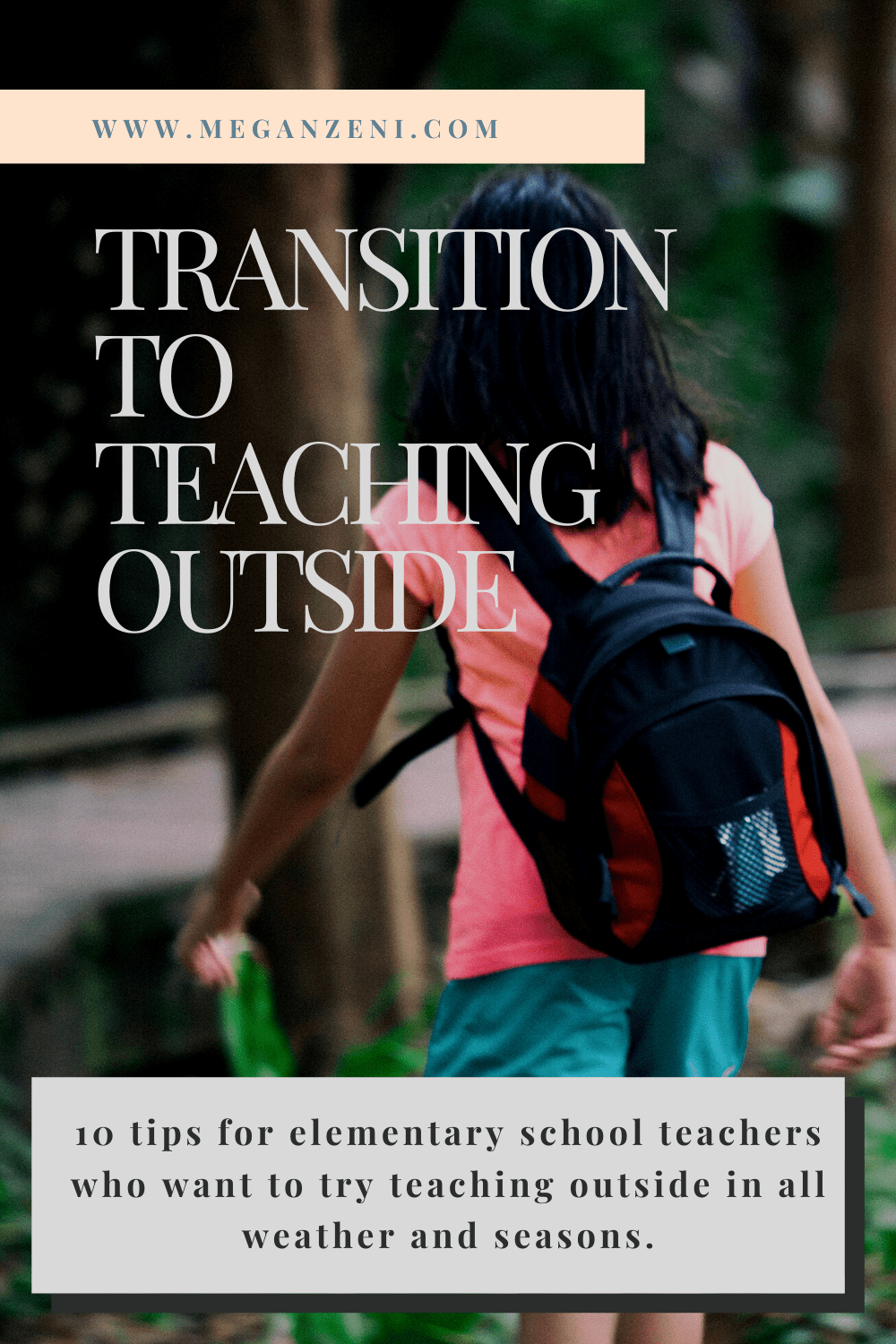
Teaching outdoors is nothing new. As a species, humans have evolved to learn outdoors. For thousands of years, we have actively learned from experience alongside our elders. It is only recently in our evolutionary path that we have asked children to learn under florescent lighting, within four walls.
Teaching Outside Transforms a Child’s Experience of School
Taking your class outdoors is not an act of rebellion, or even edgy pedagogy, it is simply good practice.
After decades of teaching outdoors, I have experienced over and over again how learning outside transforms our students’ experience of school, while reigniting my own love of teaching.
Practical Tips and Tricks for Teaching Outdoors
There is a freedom to learn for both students and teachers that emerges in our school-yards; being outdoors allows kids some autonomy and agency to come alive with curiosity and to take responsibility for their wonders. For teachers, there is something magical that happens when we allow ourselves to become co-learners with our students. By giving up on the idea that we already know everything, we powerfully model the inquiry process for our students.
In these uncertain days, teaching outdoors might be exactly what we need to move forward in a meaningful and thoughtful way. This post is designed to help teachers who are new to the practical considerations of teaching outside the classroom. There are many more tips and rich experiences to share.
I’ll list some tips from my own experience, and frequent readers of this blog, or workshop participants, many recognize images from my workshops that expand on the points I will make in this post.
If your school or district would like to book a follow-up webinar with me, contact me here.
Tip #1 – GET CLEAR ON YOUR WHY
Why do you want to try teaching outside?
There are a multitude of reasons that make sense for me, but you’ll need to do a bit of reflection on why this matters to you. For some teachers the following list of reasons might resonate, but they don’t all need to apply.
Just get clear on one reason why this is important to you, and place it front and centre in your planning. If your reason is not listed here send me a message, I’m actually very interested in this process with my colleagues!
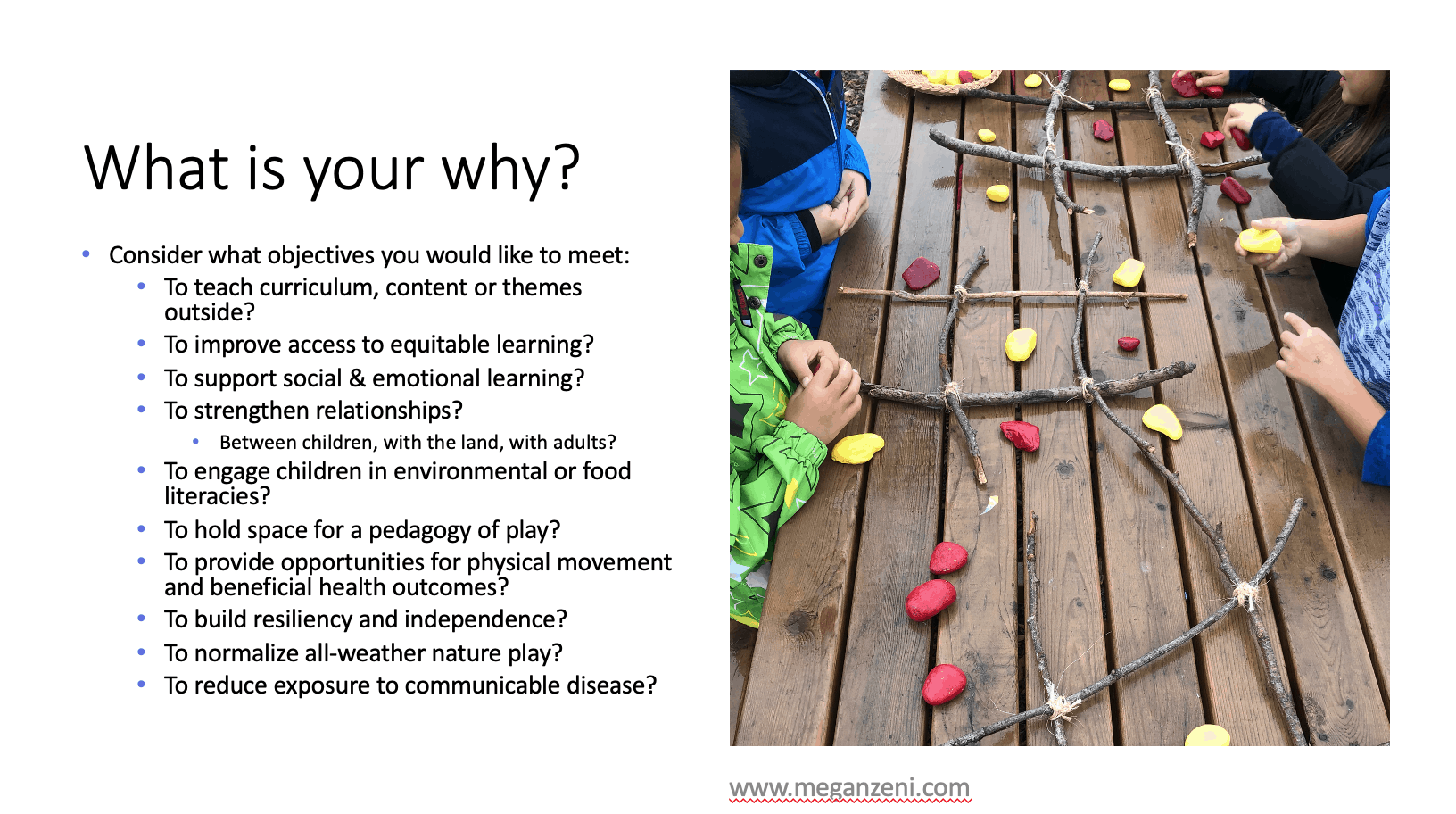
Tip #2- KNOW THE BENEFITS FOR KIDS
Once you’re clear on why you want to do this, consider the multiple benefits for your students as well!
If you need some reasons why teaching outdoors is immensely beneficial for children, here are a few to keep any naysayers happy. These benefits are grounded in decades of cross discipline global research.

Tip #3- PREPARE FOR ALL WEATHER LEARNING
Scandinavian proverbs remind us that there is no such thing as bad weather, and if you are going to teach outside the classroom, you’ll need to make your peace with some uncomfortable weather days.
In my experience this is the part of teaching outdoors that requires the most effort, but brings the most benefit. Resiliency is learned when we have to stretch beyond our own personal comforts, and with few exceptions, most of us are living in climates that humans have survived in for thousands of years with way less technical gear than we have now.
Give yourself some grace, and develop a long term plan for acquiring the gear that will make teaching outdoors easier. It took almost 4 years for us to develop a lending library of outdoor gear that could meet the needs of our school community while learning outside.
Did you know that I switched to teaching entirely outdoors more than four years ago? Read this post for details on how we switched up our lending library (not for books) for this purpose.
8 Key Points to Remember:
- Work towards making outdoor play at recess or lunch breaks the norm in your school, no matter what the weather is. This helps parents realize that their children need to come to school EVERYDAY with appropriate clothing for being outside, not just on Forest Fridays or Wilderness Wednesdays. This requires relationship building and communication with your admin team, your parent advisory group, and your colleagues. Remember, everything worth doing is hard!
- Check your own attitude. If you are excited and enthusiastic, your kids will be too. Spend some money on good gear for yourself. It will last you the next 5-10 years and you’ll be glad you made the investment. Read my blog post on what to wear teaching outside here.
- Set up your lending library near an exit of the school and have hooks installed or ask around your community for some rolling clothes racks. Up-cycle and re-purpose whatever you can get your hands on for gear storage.
- Consider what the worst weather conditions are in your climate and prepare for those. For us, this means cold rainy days are frequent and we need lots of rain pants, plus warm and waterproof boots available. Most kids have jackets, but many come to school without appropriate footwear or wet pants.
- Build up your lending library with donations and collected items from your school’s lost and found bin. Over the years, I have built up a great stash of gear just with this strategy alone. You can also specifically target your community for donations, new or used. Many stores are willing to make a donation to a school, you just need to ask. If you teach in an affluent area, you can simply add the gear to your required school supply list. If your school has a bit of a surplus budget at the end of the year, ask if it can be used for stocking up on outerwear for the following winter. Attend budget meetings in your school. There is almost always a small stash of cash that can be re-allocated over time.
- Allow your lending library to be a library without due dates. Many of our families take gear home for months at a time, others just for a day. Families without a budget for outerwear are free to take what they need, with the expectation they will bring it back when they are done. In my situation, this has resulted in an abundance of donations to our clothing library. We certainly receive more than we give.
- Consider a NO UMBRELLA policy. Umbrellas become distractions, and children can not use their hands effectively when they are holding an umbrella, umbrellas may also cause children to huddle together.
- Which brings me to consideration of transmission of communicable disease with any shared resource in schools. Long term lending is a solution, and having a clothing rack that is untouched for 2 to 3 days might be another. Until we know more about the lifespan of the corona virus on clothing, assume any used gear needs to be kept out of rotation for at least 3 days.
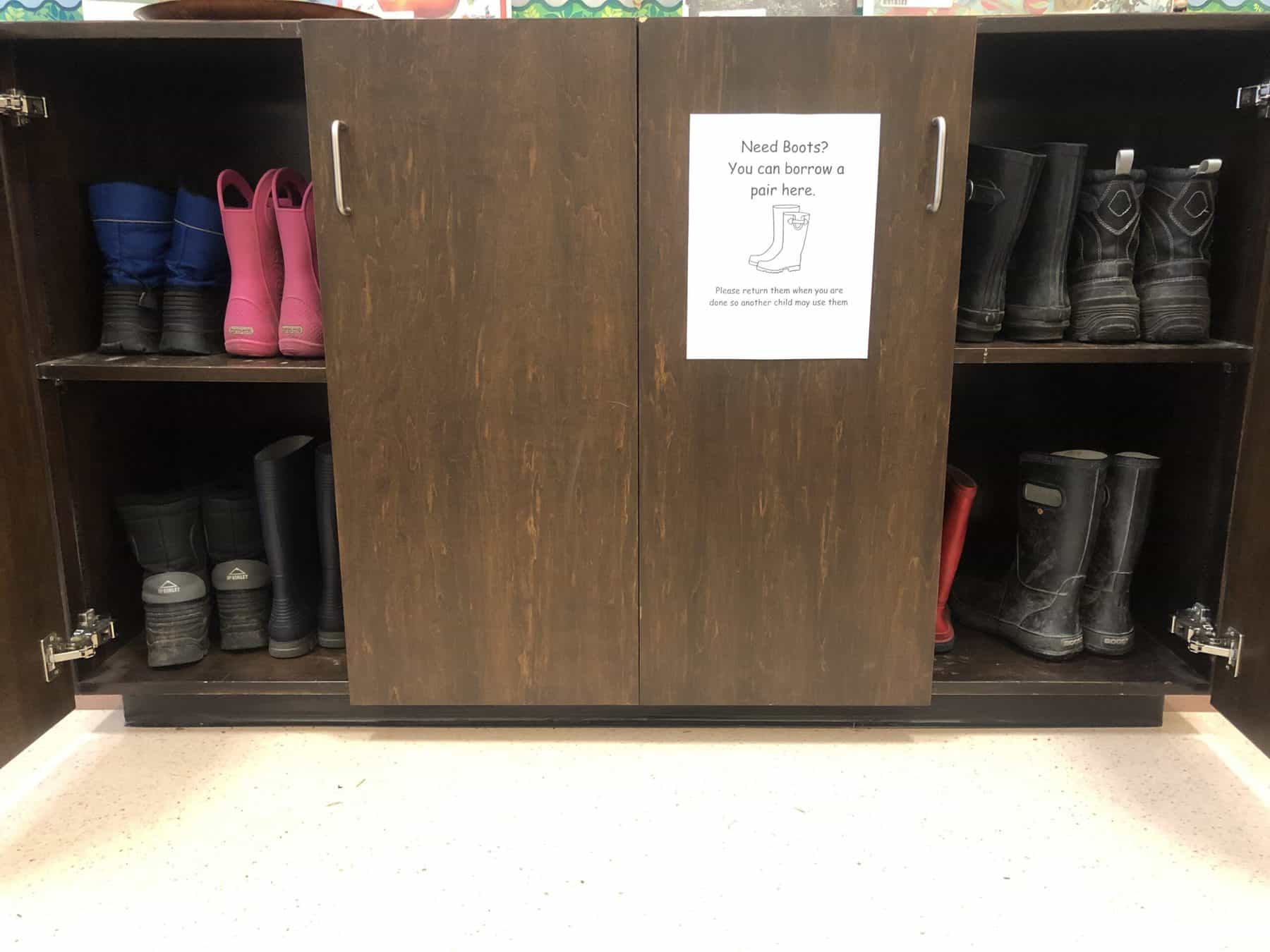
Tip #4- INVERT YOUR PLANNING
You don’t need backcountry qualifications to do this. You already have everything you need to start teaching outdoors. For teachers new to this, instead of searching the internet for lessons to try outside, simply look at what you need to cover the next day and ask yourself “what about this lesson requires me to stay inside?”
Once you look at your planning through this lens, you’ll realize that almost everything you already know how to do as an elementary school teacher can be effectively re-located outdoors!
A really easy way to start is to simply read aloud to students outside, or re-locate silent reading outside. Once you build on your confidence and comfort with classroom management outdoors, your planning will become more responsive to the learners and the place you are teaching in. Be patient with yourself, and follow your instincts.
Teachers interested in specific cross-curricular learning outdoors may want to read the posts listed below. If you are interested in a particular cross-curricular area, head back to the HOME page and check out hundreds of posts organized by subject area there.
Take your class outdoors to become Anywhere Artists
Develop design skills with a box
Develop vocabulary skills in nature
Tip #5- MAKE USE OF NATURE JOURNALS
I actually hardly use these anymore, simply because I’ve become practised at assessing learning without written evidence. But if you want to have a notebook for your students to record their observations, wonders, and sketches than a nature journal is a great transition tool to teaching outside the classroom.
I do highly recommend them, particularly if you have students who enjoy sketching, poetry, or recording their observations. My only caution around nature journals is to be sure they don’t become a barrier for learning for complex learners with written output challenges.
If a student is not successful with written work inside the classroom, they likely won’t suddenly become enthusiastic about it outside either.
There are many ways around this in my literacy posts linked below. If you want more information, I offer workshops on assessment outdoors, as well as teaching core and curricular competencies outdoors. You can contact me here for rates and availability.
It is a good idea to cover your journals so they don’t get too wet if they drop on the ground or are forgotten overnight. We use either a paper grocery bag or construction paper to buffer the cover from dampness.
I also highly recommend these acrylic clipboards.
They are completely water proof and make it easier for children to write in their nature journals. For drizzly days, use a page protector clipped over the journal or these multipurpose magnifying lenses to keep everything dry.
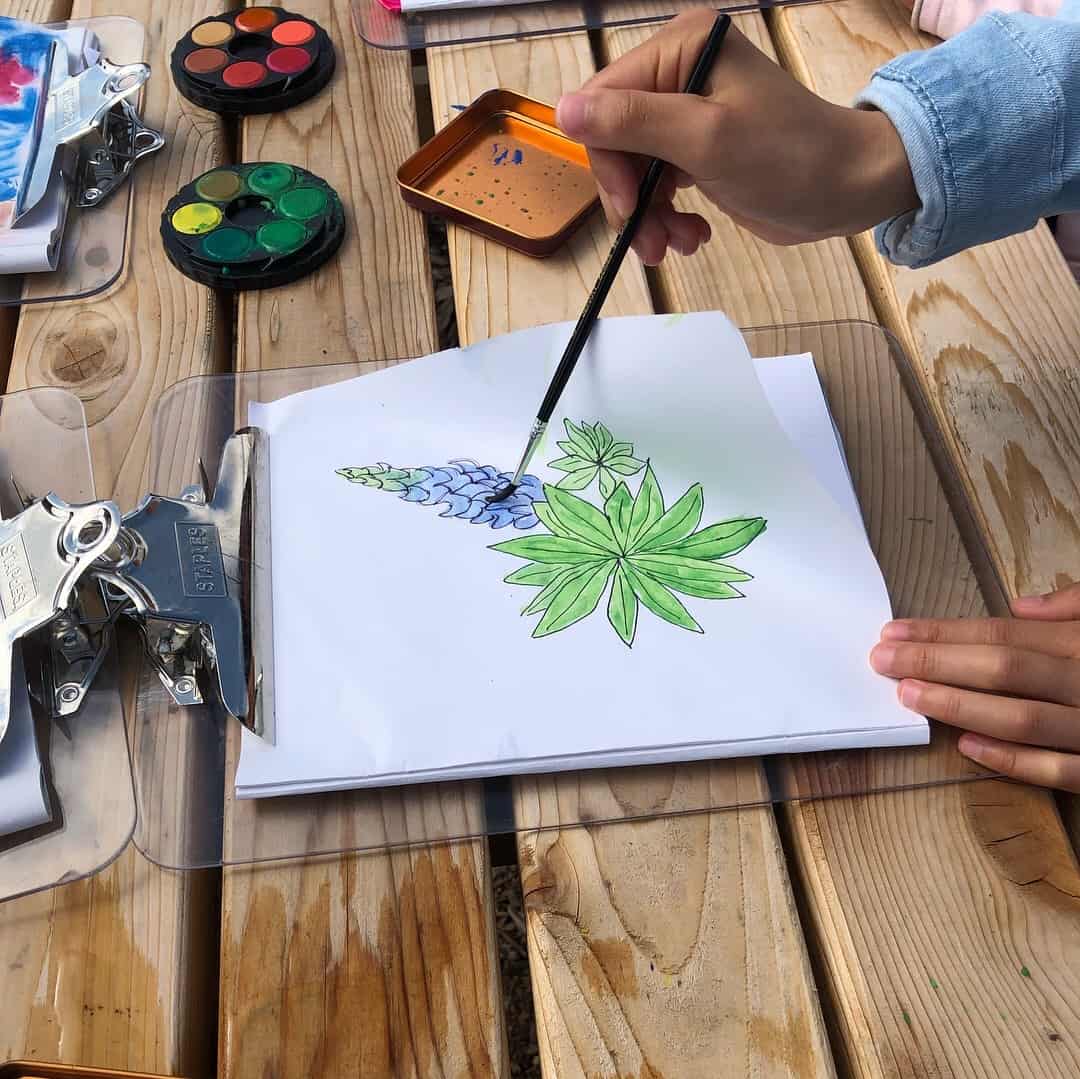
Tip #6- PRACTICE ENTRY AND EXIT ROUTINES
Like any classroom space, an outdoor classroom has routines and expectations that distinguish it from the unstructured play of recess.
Time spent in your outdoor classroom is the essential ingredient for learning to happen. If you think about how long it takes to get your students marching to the beat of your drum in September, you’ll recall it takes almost the entire month of September. Assuming this follows the widely accepted norm of 21 exposures to develop a habit, then only taking your students outside once a week for Forest Fridays or Wilderness Wednesdays means it can potentially take 21 WEEKS before your class is ready to settle and listen and engage in meaningful learning outside.
The only solution to this common practice in outdoor learning is to ensure you make your entry and exits from your outdoor classroom a routine you practice daily from the first week of September.
Make it a habit to spend even just ten minutes before dismissal outside everyday to habituate your students to the variety of spaces and places for learning your school offers.
In our outdoor classroom, we have logs that the students sit at while we discuss our learning intentions. If you don’t have logs, you might have a tarp, or a sit spot, or some rocks. You might gather in a standing circle. Whatever your entrance routine will be, practice it to avoid frustration when you begin to layer lessons into your outdoor practice. This is what the reception area of our outdoor classroom looks like.
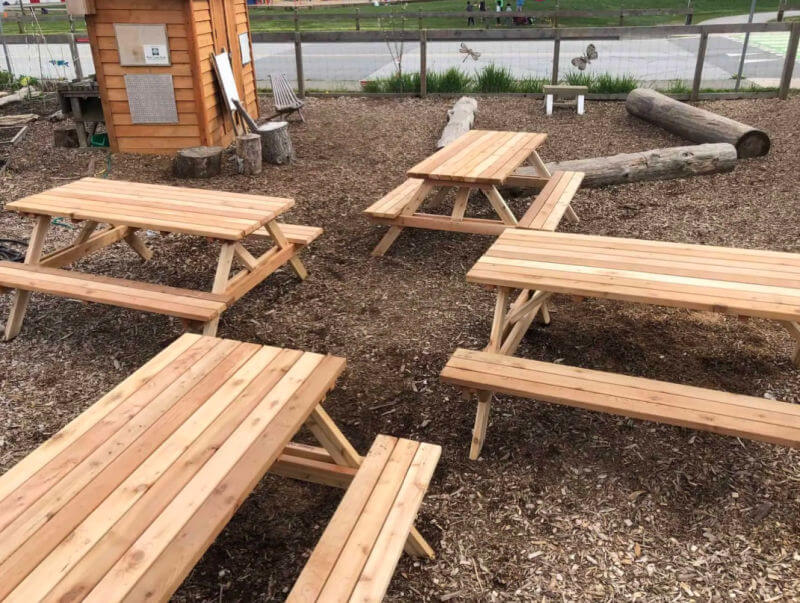
Tip #7- DEVELOP A PROFESSIONAL LEARNING NETWORK (PLN)
I can’t emphasize enough the importance of surrounding yourself with like minded educators. If you are in British Columbia, please consider joining the following networks of your peers. Many offer online webinars and ongoing professional learning, conferences, and connection beyond the classroom.
Environmental Educators Provincial Specialist Association (EEPSA)
Columbia Basin Environmental Educators Network (CBEEN)
Classrooms to Communities- BC Education Network (C2CBC)
Across Canada:
Canadian Network for Environmental Education and Communication (EECOM)
Everywhere:
Imaginative Ecological Education (IEE)
Creative Star Teaching (author of Dirty Teaching & Messy Maths)
Tip #8- RE-ALLOCATE FIELD TRIP FUNDS
Chances are slim to none that we will be getting on a school bus to visit a field trip location anytime soon. So re-allocate those funds towards building up your supplies for teaching outdoors. If you consider what each classroom was spending on field trips each year, multiplied by each class in the school, you’ll find you can source several thousand dollars for in an “in-class” field trip that will have the added benefit of lasting for years!
You can build a shed for your supplies, which is a great ADST project, purchase “go bags” and supplies, a wagon, some tarps, or have a log circle built by your school district. The options are endless. If you need inspiration for outdoor classroom design and features, you may want to join me on Pinterest here:
You might even want to start a school garden. If you are in BC and looking for school garden grants you can check out my up-to-date list of grants available for school garden development here.
Tip #9- EMBRACE AN EMERGENT CURRICULUM
The emergent curriculum simply means teachers are open to facilitating learning that is responsive to student interests. The process of emergence is a phenomenon that emerges when we participate in the world around us, and is often very place specific.
Teachers who are skilled in delivering an emergent curriculum weave required curricular content masterfully with the emerging experiences of children to meet or often exceed the anticipated goals of the original lesson.
Plainly put, have a plan when you go outside to teach, but be flexible and responsive to the interests and wonders that emerge.
This approach asks you to give up a little bit of your power as a teacher, but results in significant learning for everyone. In the image below you can see some lady bug eggs that a student discovered on a blade of grass that ignited a wonderful, weeks long, inquiry into the life cycle of ladybugs.
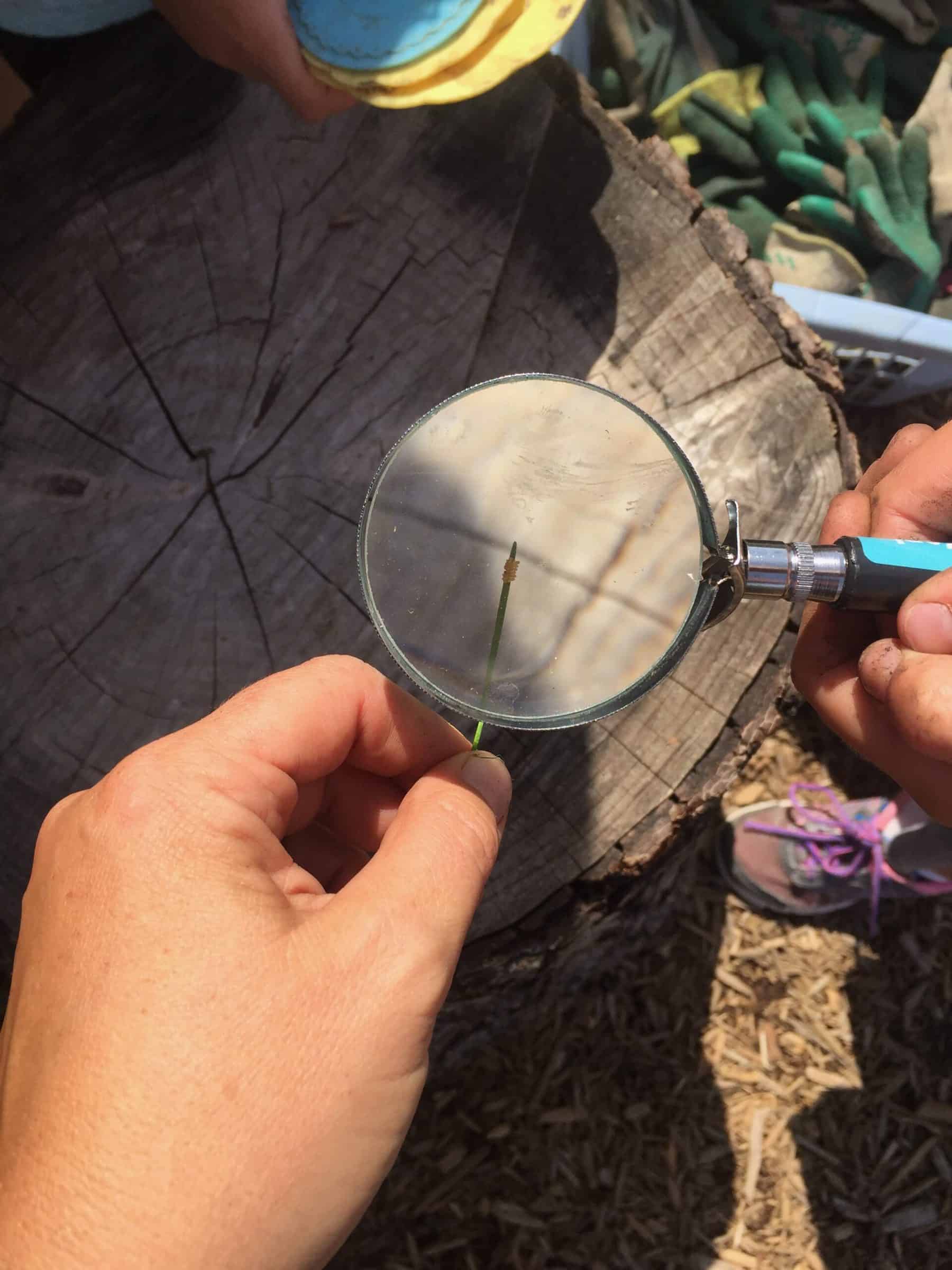
Tip #10- TRUST YOUR STUDENTS
So much of any of our success as teachers comes from trusting our students. Relationships are everything in this profession, and teaching outside is no different.
My last tip is to trust your kids. Talk to them about why it is important for you to take them outside. Discuss the benefits for them, and ask what they think they’ll get out of it.
In over 20 years of teaching outside, I can count on one hand the number of students who really did not thrive in an outdoor classroom. Trust that they will listen to what you need to feel safe when taking them outside. Trust that they will make decent decisions that allow the learning to continue outdoors. Trust that they will find learning on their own and that they will be excited to share their discoveries with you. And trust that you can do this.
Just do it.
Start small and give it a go. I’d love to hear your stories. Tag me on Twitter or Instagram at @roomtoplay so I can see your journey.
These are uncertain and strange days for everyone as we return to school. Be well friends! You’ve got this, and like Ms. Frizzle says “get messy and make mistakes!”
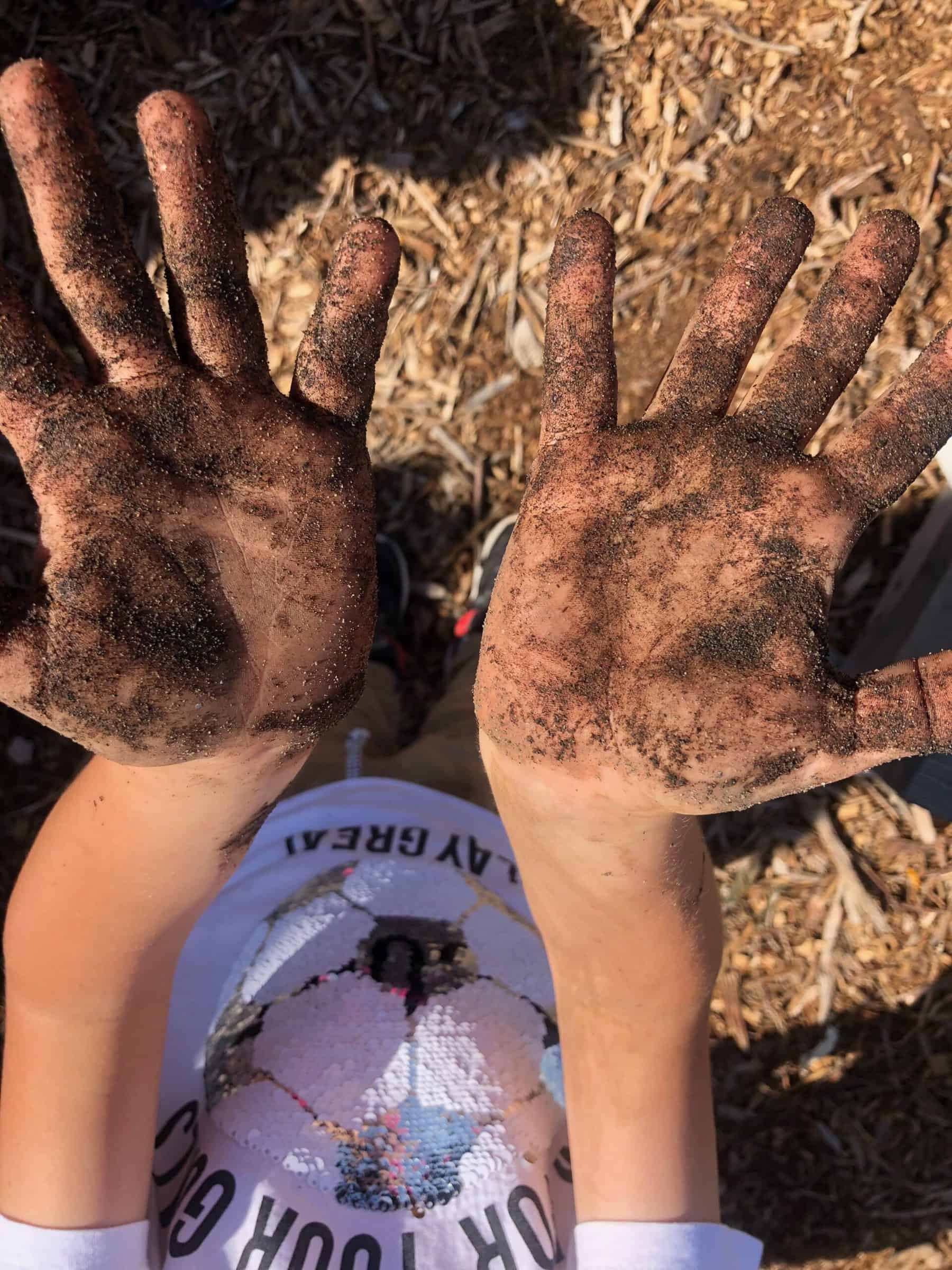
And if I haven’t yet convinced you, here is a wonderfully concise video from Sir Ken Robinson on why we should take our learning outdoors!
And finally, if you enjoy browsing Pinterest for ideas, be sure to check out these curated ideas for outdoor learning:
